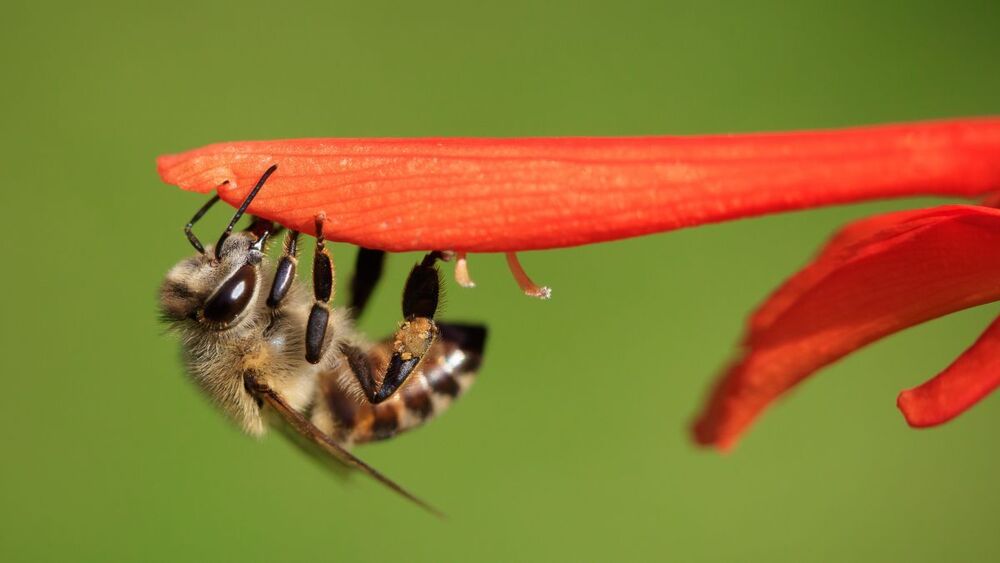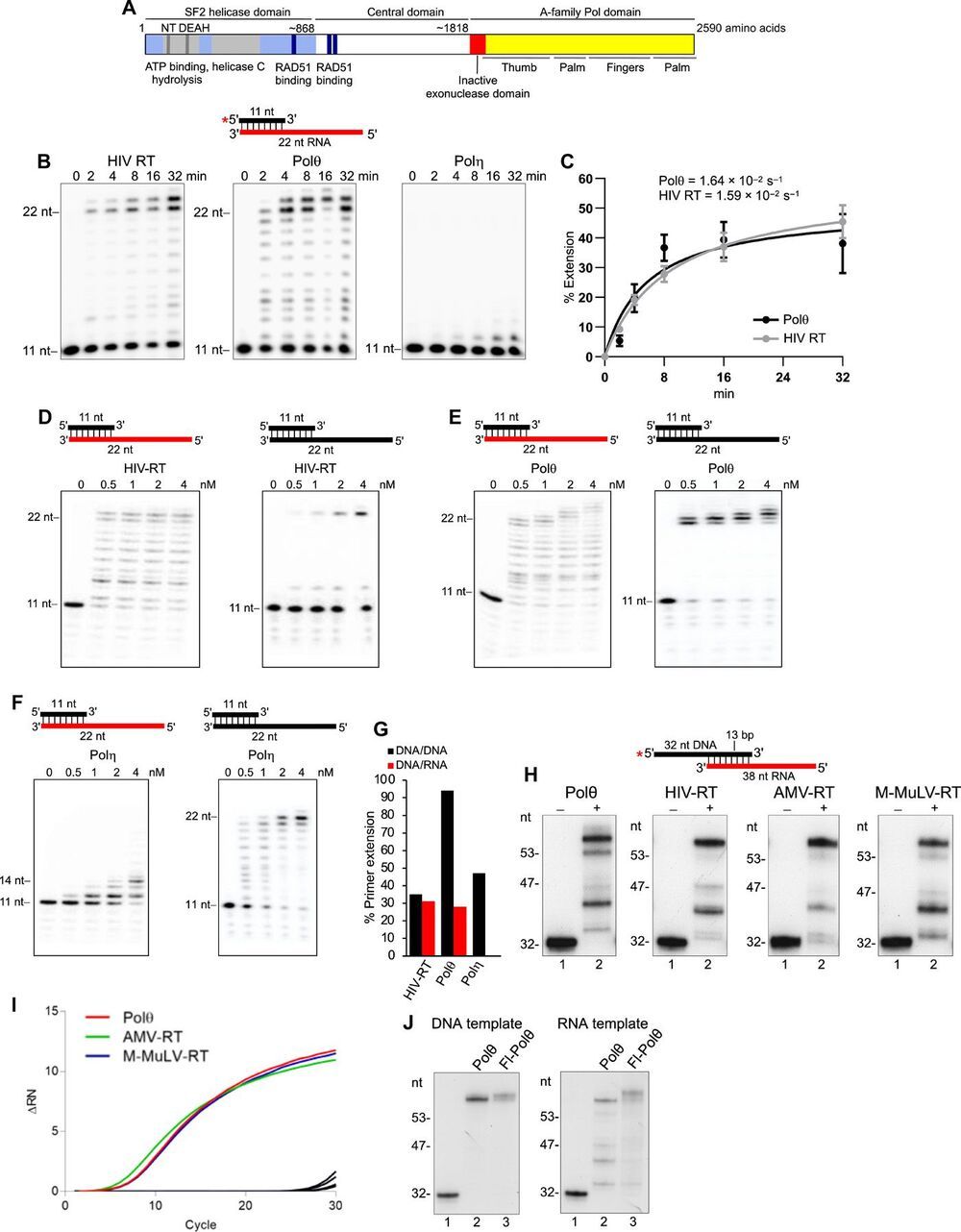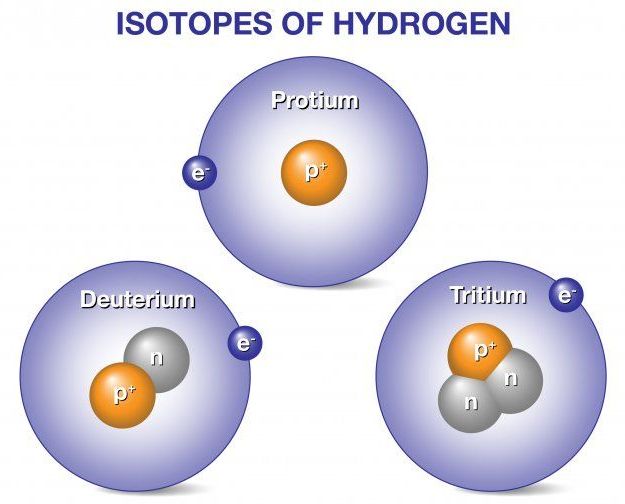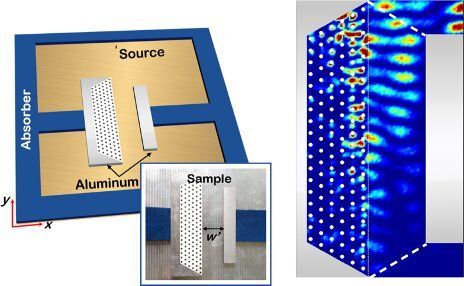Page 5164
Jun 25, 2021
Single bee is making an immortal clone army thanks to a genetic fluke
Posted by Quinn Sena in categories: biotech/medical, genetics, life extension
To understand how the clones can create millions of copies of themselves and yet remain functional, Oldroyd and his team compared the genomes of Cape honeybee workers with those of their queen and her offspring.
After forcing the Cape queen to reproduce asexually by fitting her with surgical tape that prevented her from mating, the team examined certain DNA sequences of both the Cape queen and the 25 larvae she produced. Then, they did the same for four Cape honeybee workers and their 63 larvae.
The team discovered that the asexually reproduced offspring of the queen had levels of recombination (DNA mixing) 100 times greater than the genetically identical cloned offspring of the workers — a finding that suggests the Cape worker bees have evolved a mutation that prevents recombination. Without the risk of a one-third loss of genetic material caused by the asexual reshuffling process, the workers are free to continually create perfect copies of themselves.
Jun 25, 2021
Polθ reverse transcribes RNA and promotes RNA-templated DNA repair
Posted by Saúl Morales Rodriguéz in categories: biotech/medical, genetics
Genome-embedded ribonucleotides arrest replicative DNA polymerases (Pols) and cause DNA breaks. Whether mammalian DNA repair Pols efficiently use template ribonucleotides and promote RNA-templated DNA repair synthesis remains unknown. We find that human Polθ reverse transcribes RNA, similar to retroviral reverse transcriptases (RTs). Polθ exhibits a significantly higher velocity and fidelity of deoxyribonucleotide incorporation on RNA versus DNA. The 3.2-Å crystal structure of Polθ on a DNA/RNA primer-template with bound deoxyribonucleotide reveals that the enzyme undergoes a major structural transformation within the thumb subdomain to accommodate A-form DNA/RNA and forms multiple hydrogen bonds with template ribose 2′-hydroxyl groups like retroviral RTs. Last, we find that Polθ promotes RNA-templated DNA repair in mammalian cells. These findings suggest that Polθ was selected to accommodate template ribonucleotides during DNA repair.
Polymerase θ (Polθ) is a unique DNA polymerase-helicase fusion protein in higher eukaryotes whose A-family polymerase domain evolved from Pol I enzymes (Fig. 1A) (1, 2). However, contrary to most Pol I enzymes, Polθ is highly error-prone and promiscuous (3–6), performs translesion synthesis (TLS) opposite DNA lesions (3, 7, 8), and facilitates microhomology-mediated end-joining (MMEJ) of double-strand breaks (DSBs) by extending partially base-paired 3′ single-stranded DNA (ssDNA) overhangs at DSB repair junctions (5, 9–12). Polθ is not expressed in most tissues but is highly expressed in many cancer cells, which corresponds to a poor clinical outcome (13, 14). Furthermore, Polθ confers resistance to genotoxic cancer therapies and promotes the survival of cells deficient in DNA damage response pathways (11, 13–16). Thus, Polθ represents a promising cancer drug target.
Intriguingly, Polθ has an inactive proofreading domain due to acquired mutations (Fig. 1A) (2). Inactivating the 3′-5′ proofreading function of closely related A-family bacterial Pol I Klenow fragment (KF) enables this polymerase to reverse transcribe RNA like retroviral reverse transcriptases (RTs), which lack proofreading activity (fig. S1A) (17, 18). Because Polθ is highly error-prone and promiscuous and contains an inactive proofreading domain, we hypothesized that it has RNA-dependent DNA synthesis activity. Given that ribonucleotides are the most frequently occurring nucleotide lesion in genomic DNA that arrest replicative Pols and cause DNA breaks (19, 20), we also envisaged that Polθ would tolerate template ribonucleotides during its DNA repair activities and thus promote RNA-templated DNA repair synthesis (RNA-DNA repair). Although RNA-DNA repair mechanisms have been demonstrated in genetically engineered yeast cells (21, 22), they remain obscure in mammalian cells.
Jun 25, 2021
General Fusion to build its Fusion Demonstration Plant in the UK, at the UKAEA Culham Campus
Posted by Scott Bleackley in categories: economics, finance, government, nuclear energy, particle physics, sustainability
## GENERAL FUSION (VANCOUVER) • JUN 16, 2021.
# General Fusion to build its Fusion Demonstration Plant in the UK, at the UKAEA Culham Campus.
*Unlike conventional nuclear power, which involves fission or splitting atoms, the emerging fusion technology promises clean energy where the only emission would be helium, and importantly, no radioactive waste.*
Jun 25, 2021
Some foresight about the future of foresight
Posted by Scott Bleackley in categories: habitats, robotics/AI
## FUTURE TENSE RN ABC (AUDIO 29 MIN) • JUN 27, 2021.
# Some foresight about.
the future of foresight.
*Trying to predict the future is a timeless and time-consuming pursuit.*
Continue reading “Some foresight about the future of foresight” »
Jun 25, 2021
DOE Explains…Deuterium-Tritium Fusion Reactor Fuel
Posted by Quinn Sena in categories: business, nuclear energy, particle physics
Fusion energy has the potential to supply safe, clean, and nearly limitless power. Although fusion reactions can occur for light nuclei weighting less than iron, most elements will not fuse unless they are in the interior of a star. To create burning plasmas in experimental fusion power reactors such as tokamaks and stellarators, scientists seek a fuel that is relatively easy to produce, store, and bring to fusion. The current best bet for fusion reactors is deuterium-tritium fuel. This fuel reaches fusion conditions at lower temperatures compared to other elements and releases more energy than other fusion reactions.
Deuterium and tritium are isotopes of hydrogen, the most abundant element in the universe. Whereas all isotopes of hydrogen have one proton, deuterium also has one neutron and tritium has two neutrons, so their ion masses are heavier than protium, the isotope of hydrogen with no neutrons. When deuterium and tritium fuse, they create a helium nucleus, which has two protons and two neutrons. The reaction releases an energetic neutron. Fusion power plants would convert energy released from fusion reactions into electricity to power our homes, businesses, and other needs.
Fortunately, deuterium is common. About 1 out of every 5000 hydrogen atoms in seawater is in the form of deuterium. This means our oceans contain many tons of deuterium. When fusion power becomes a reality, just one gallon of seawater could produce as much energy as 300 gallons of gasoline.
Jun 25, 2021
Study shows potential dangers of sweeteners
Posted by Jason Blain in categories: biotech/medical, health
Saccharine, aspartame, sucralose.
New research has discovered that common artificial sweeteners can cause previously healthy gut bacteria to become diseased and invade the gut wall, potentially leading to serious health issues.
The study, published in the International Journal of Molecular Sciences, is the first to show the pathogenic effects of some of the most widely used artificial sweeteners—saccharin, sucralose, and aspartame—on two types of gut bacteria, E. coli (Escherichia coli) and E. faecalis (Enterococcus faecalis).
Continue reading “Study shows potential dangers of sweeteners” »
Jun 25, 2021
The first observation of the superscattering effect of metamaterials
Posted by Genevieve Klien in categories: materials, physics
Entering an invisible doorway to catch a train at King’s Cross station in London is a renowned fictional scene from the Harry Potter series. In recent decades, physicists have been trying to produce a similar effect by focusing their research efforts on illusion devices.
Illusion devices are devices that can change the optical properties of objects to match those of other virtual objects or make them apparently invisible, producing an illusion. Two common types of illusion devices are super-scatterers and invisible gateways. The first are designed to scatter light and the second to bounce back light rays through a physical gateway.
From a theoretical standpoint, super-scatterers and invisible gateways have so far been primarily studied in the context of transformation optics and folded geometry transformations (i.e., the visual, illusory transformation of objects into other objects). Experimentally realizing these devices, however, requires the use of metamaterials with specific properties (e.g., a negative permittivity and permeability) that can be difficult to employ in fabrication processes.
Jun 25, 2021
Amazon acquires encrypted messaging app Wickr
Posted by Genevieve Klien in categories: biotech/medical, encryption, governance, government, military
“We’re excited to share that AWS has acquired Wickr, an innovative company that has developed the industry’s most secure, end-to-end encrypted, communication technology,” Stephen Schmidt, Amazon Web Services’ vice president, wrote. With a nod to the company’s ever-deepening relationships with the military, and Washington in general, Schmidt added that Wickr’s features give “security conscious enterprises and government agencies the ability to implement important governance and security controls to help them meet their compliance requirements.” Schmidt himself has a background in this space: his LinkedIn profile notes he spent a decade at the FBI.
Wickr’s app — like secure messaging competitor Signal — has been popular with journalists and whistleblowers; it’s also been a go-to for criminals, Motherboard notes. It’s unclear if the proximity to the tech monolith will impact the app’s popularity for free users.
In Amazon’s case, Schmidt indicates the acquisition was at least partially influenced by the need to preserve information security while working remotely. “With the move to hybrid work environments, due in part to the COVID-19 pandemic, enterprises and government agencies have a growing desire to protect their communications,” he wrote.
Jun 25, 2021
Groundbreaking ‘superhero’ vaccine based on Olympic athlete DNA could transform society
Posted by TJ Wass in categories: bioengineering, biotech/medical, genetics, neuroscience
STANFORD, Calif. — A groundbreaking “superhero” vaccine inspired by the DNA code of Olympic athletes could help transform society over the next decade, a top genetic scientist claims.
The vaccine would provide lifelong protection against three of the top ten leading causes of death, according to Euan Ashley, professor of medicine and genetics at Stanford University. The so-called “superhero” jab could offer simultaneous, long-term protection against heart disease, stroke, Alzheimer’s disease, and liver disease, thanks to advances in genetic engineering.
This breakthrough treatment would deliver the blueprint of “ideal” cells from men and women whose genes are more disease-resistant than those of the average person, together with an “instruction manual” to help the body “repair, tweak and improve” its own versions. A single dose could lead to a “body-wide genetic upgrade” that would cut the risk of premature death in some adults by as much as 50 percent.


















